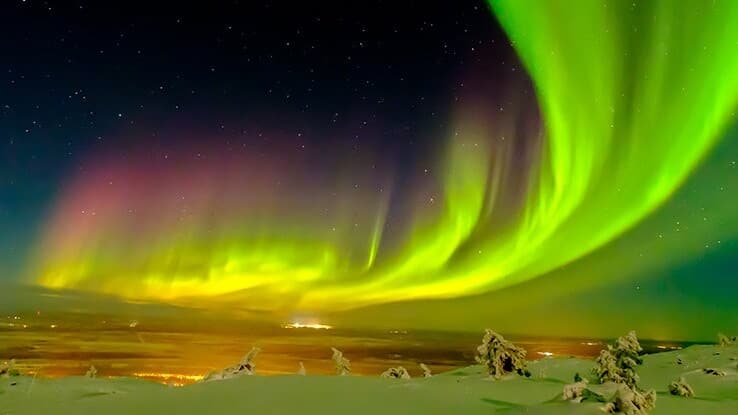
Understanding solar storms: How Earth's magnetic field protects us
What's the story
The stunning aurora observed in early May this year was a powerful demonstration of the might of solar storms.
Yet, the Sun occasionally releases something even more destructive known as "solar particle events."
These are potent blasts of protons that rocket out from the Sun's surface into space.
Records show that Earth is struck by an extreme solar particle event roughly every thousand years, causing huge damage to the ozone layer and increasing ultraviolet (UV) radiation levels at the surface.
Magnetic shifts
Earth's magnetic field: A vital shield undergoing changes
Earth's magnetic field, a protective barrier against the Sun's radiation, is not constant.
Over the past century, the north magnetic pole has shifted across northern Canada at a rate of 40km per year, and the field has weakened by over 6%.
Geological records reveal periods spanning centuries or even millennia when this geomagnetic field was extremely weak or absent.
The effects of such absence can be seen on Mars, which lost its magnetic field, and subsequently most of its atmosphere.
Solar impact
A threat to Earth's atmosphere
The Sun's outer atmosphere constantly emits a fluctuating stream of electrons and protons called "solar wind."
Occasionally, bursts of energy, primarily protons, are emitted from the Sun's surface in solar particle events.
These protons carry more energy than electrons, allowing them to reach lower altitudes in Earth's atmosphere.
However, these excited molecules only emit X-rays, invisible to the naked eye.
Extreme solar particle events occur roughly every few millennia with the most recent one taking place around 993 CE.
Ozone depletion
The potential consequences of extreme solar particles
Solar particle events can initiate a chain of chemical reactions in the upper atmosphere that can deplete ozone.
Ozone absorbs solar UV radiation, which can damage eyesight and DNA (increasing skin cancer risk), as well as impacting the climate.
A recent study used large computer models to examine these impacts, and found that an extreme event could deplete ozone levels for around a year, raising UV levels at the surface and increasing DNA damage.
Lethal combination
The impact of weak magnetic field and extreme solar events
If a solar proton event occurred during a time when Earth's magnetic field was extremely weak, then ozone damage would last six years.
This would increase UV levels by 25% and boost the rate of solar-induced DNA damage by up to 50%.
The likelihood of this deadly combination is relatively high given their frequency.
This combination might explain several mysterious occurrences in Earth's past such as the disappearance of Neanderthals in Europe and the extinction of marsupial megafauna in Australia.
Evolutionary impact
Influences on life's history
The rise of multicellular animals at the end of the Ediacaran period, and the evolution of diverse animal groups in the Cambrian Explosion, have also been linked to high UV levels and geomagnetism.
The role played by solar activity and Earth's magnetic field in life's history is still being explored.
This research underscores the potential impact that extreme solar events, combined with a weak magnetic field, could have on life across our planet, highlighting an area that requires further investigation.